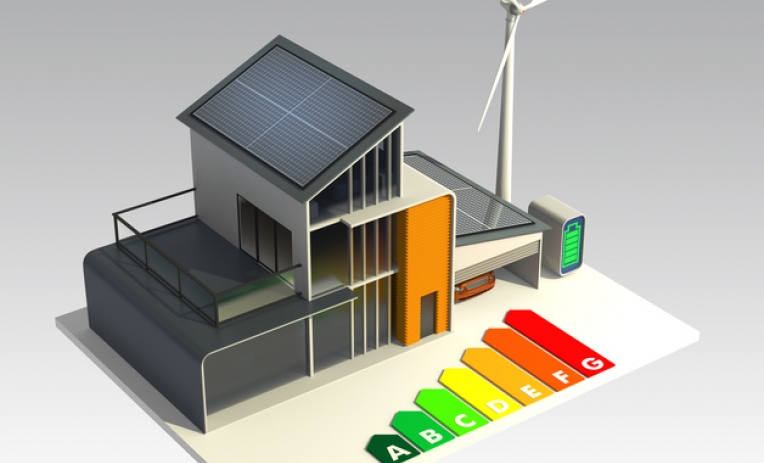From the envoy in Strasbourg – The revised Energy Performance of Buildings Directive, the so-called green homes directive, clears one of the last hurdles towards to its entry into force. All that is missing is the green light from the 27 EU governments to execute the new energy standards for the EU’s building stock. With 370 votes in favor, 199 against, and 46 abstentions, the plenary session of the European Parliament today (March 12) endorsed the agreement reached on December 7, 2023, to reduce the environmental impact of Europe’s building stock, which is responsible for about 40 percent of Europe’s energy consumption and 36 percent of CO2 emissions.
 Following the green light two months ago from the Eurocamera’s Committee on Industry, Research and Energy (ITRE), the parliamentary majority has also confirmed the approval of time targets to raise energy standards in the Strasbourg hemicycle: from 2030, all new residential buildings must be built to be zero-emission – from 2028 for public buildings – with the entire building stock climate-neutral by 2050. “This is the right transition. This is the Green Deal, where no one is left behind,” since “we provide better buildings and better quality of life for everyone,” said the European Parliament’s rapporteur Ciarán Cuffe (Greens/Ale). In the House debate preceding the vote, Energy Commissioner Kadri Simson strongly emphasized that “buildings are big consumers of energy. We cannot address climate challenges and dependencies on energy supplies if we don’t address real estate,” calling the agreement reached by the co-legislators “a good, ambitious balance between flexibility and feasibility,” which ensures “the necessary measures to promote the energy performance of the worst buildings without forcing individual owners to renovate.”
Following the green light two months ago from the Eurocamera’s Committee on Industry, Research and Energy (ITRE), the parliamentary majority has also confirmed the approval of time targets to raise energy standards in the Strasbourg hemicycle: from 2030, all new residential buildings must be built to be zero-emission – from 2028 for public buildings – with the entire building stock climate-neutral by 2050. “This is the right transition. This is the Green Deal, where no one is left behind,” since “we provide better buildings and better quality of life for everyone,” said the European Parliament’s rapporteur Ciarán Cuffe (Greens/Ale). In the House debate preceding the vote, Energy Commissioner Kadri Simson strongly emphasized that “buildings are big consumers of energy. We cannot address climate challenges and dependencies on energy supplies if we don’t address real estate,” calling the agreement reached by the co-legislators “a good, ambitious balance between flexibility and feasibility,” which ensures “the necessary measures to promote the energy performance of the worst buildings without forcing individual owners to renovate.”
What the directive on ‘green homes’ provides.
The Commission proposed the revision of the Green Homes Directive in December 2021. After two years, co-legislators of the EU Parliament and Council reached a provisional understanding negotiated on December 7, 2023, smoothing out parts of the initial proposal to meet the demands of member countries. In Italy, the proposal sparked controversy over financing and minimum energy performance standards, including a requirement to renovate at least 15 percent of the worst-performing buildings in each member country. The text approved by Parliament abandons the idea of including renovation requirements for individual buildings based on harmonized energy classes establishing reference averages for each state across the entire building stock. For non-residential buildings, 16 percent of the worst-performing buildings will be targeted for renovation by 2030 and 26 percent by 2033. An energy consumption reduction target of 16 percent by 2030 and 20-22 percent by 2035 applies to residential buildings. Renovation measures taken since 2020 will count toward the target, and there is an additional clause rewarding member states that have taken early measures.
There are exemptions for historic and agricultural buildings. Member countries may also decide to exclude buildings protected for special architectural or historic value, temporary buildings, churches, and places of worship. The obligation to abandon fossil-fueled boilers for heating and cooling was postponed to 2040, but subsidies for fossil-fueled stand-alone boilers will cease by 2025. Financial incentives will still be possible for heating systems that use a “significant” amount of renewable energy, such as those that combine a boiler with a solar thermal system or heat pump.
On renewables, the mandatory installation of solar panels on roofs will cover public and non-residential buildings “depending on their size” and all new residential buildings by 2030. The directive on the energy performance of buildings will now have to be formally approved by the Council, and after the text is published in the EU Official Journal, implementation of the rules is expected to begin in 2026.
Specifically for private individuals, there is no imposition of a universal obligation for building renovations. However, it will be necessary to wait for the definition of the adaptable national plans, which envisage an average intervention on the whole building (with the two targets in 2030 and 2035). Therefore, it will be up to individual member countries to set minimum energy performance standards and to decide which buildings and what level of renovation will be required: they can focus on older buildings with high energy performance classes, or larger, more polluting ones.
English version by the Translation Service of Withub






